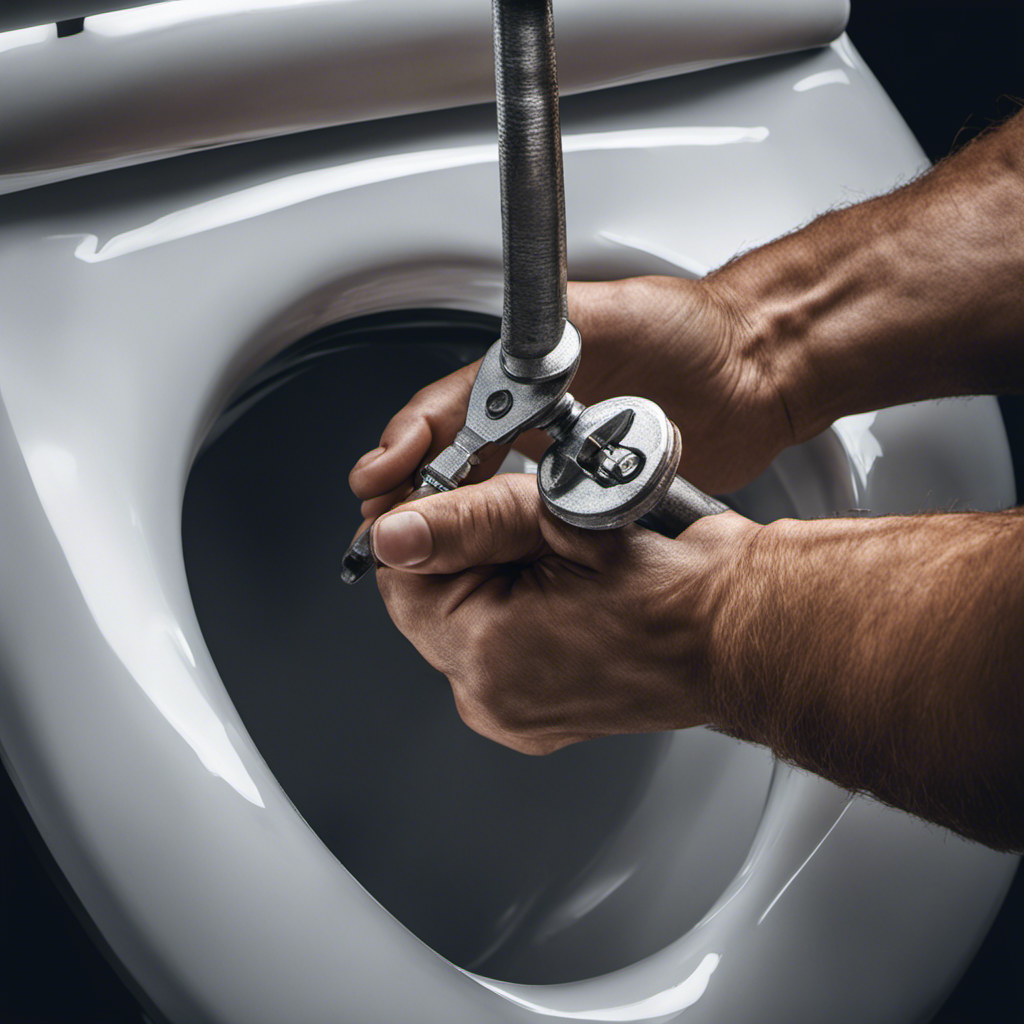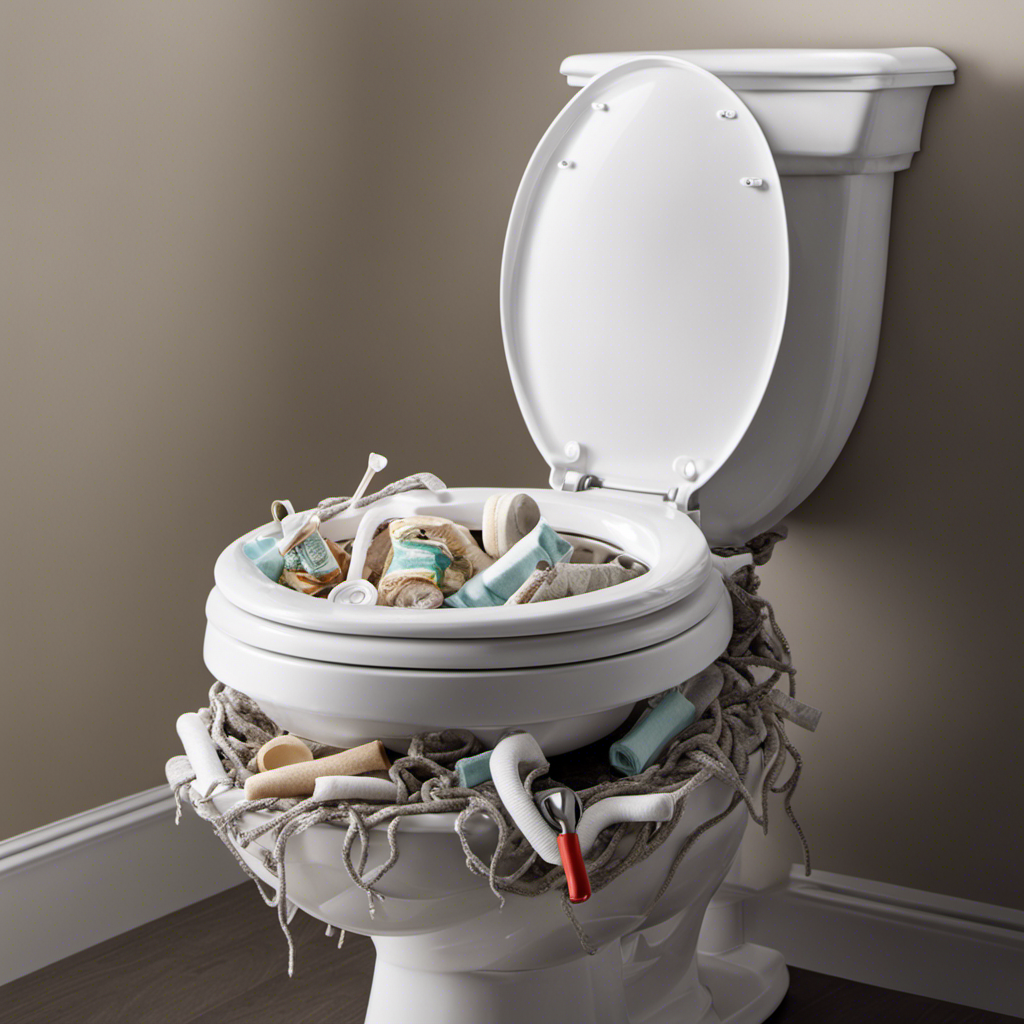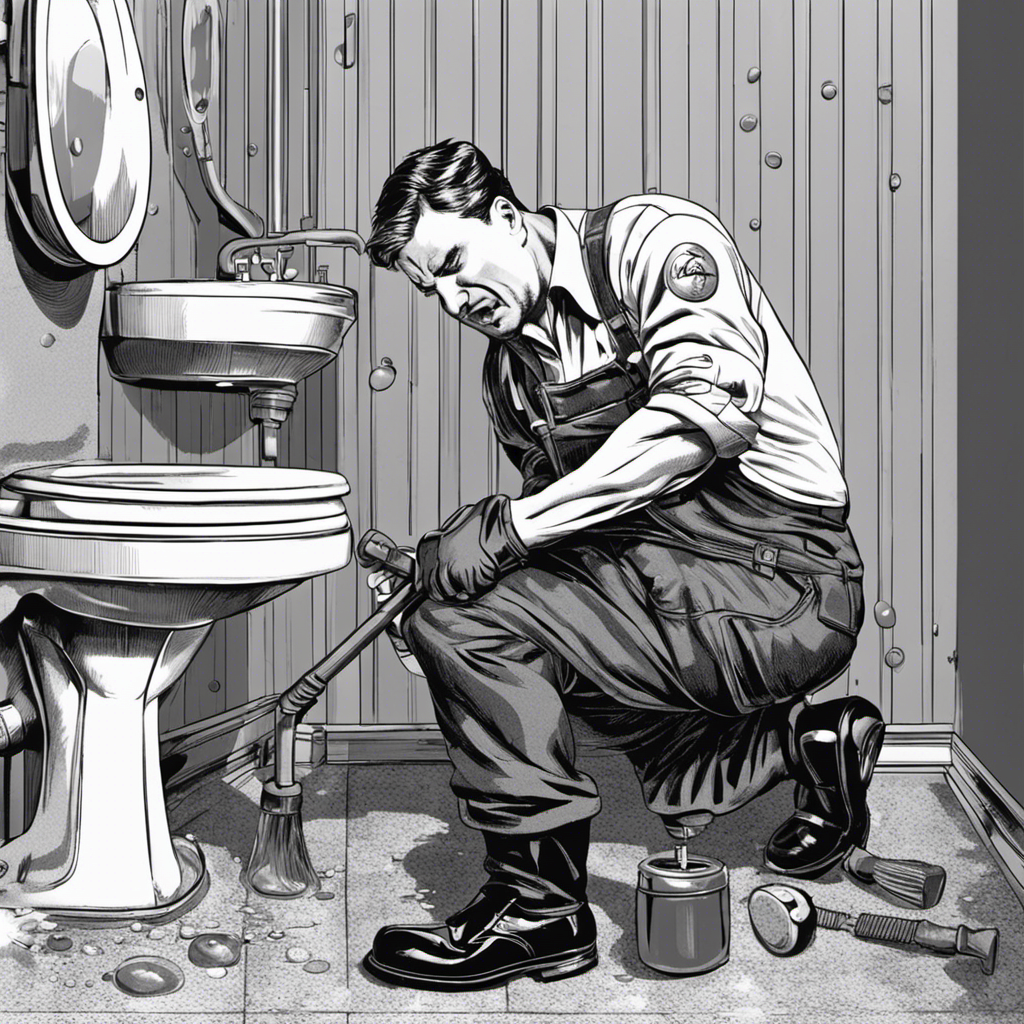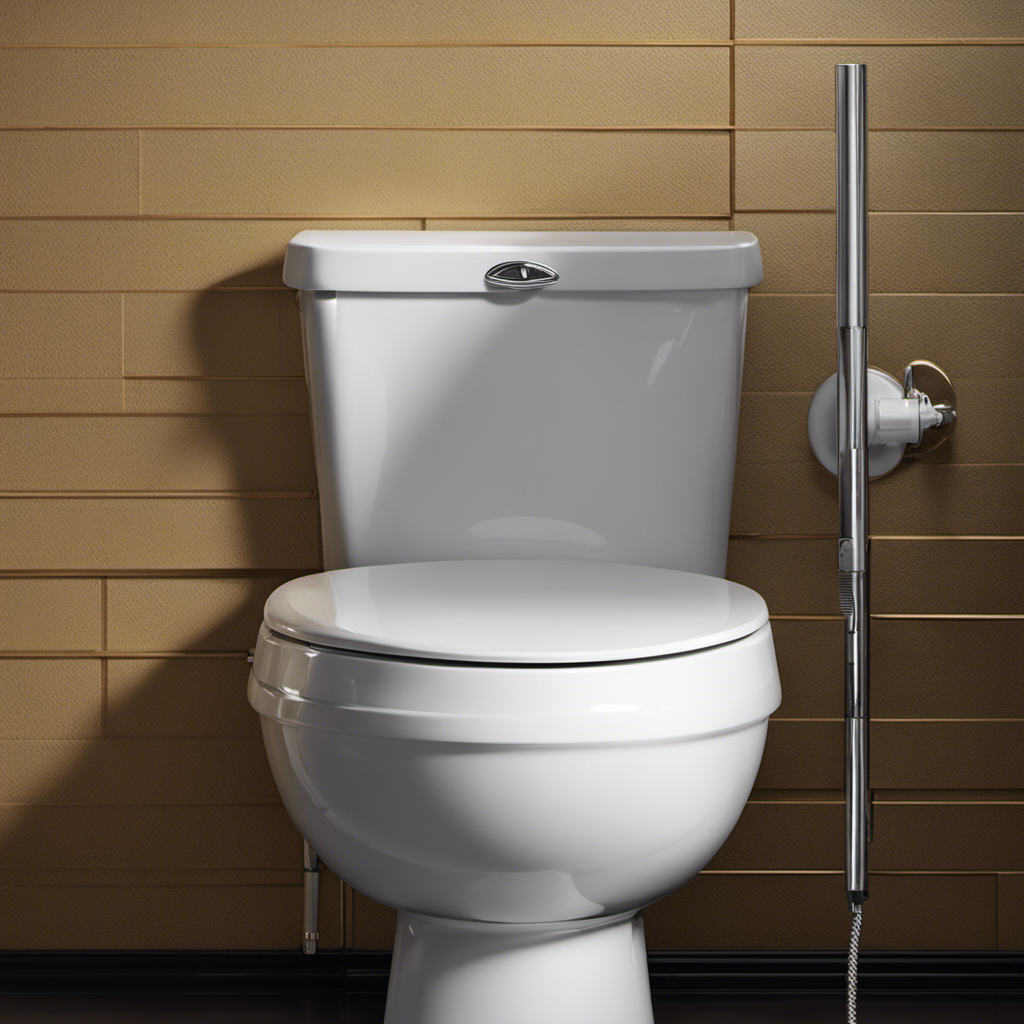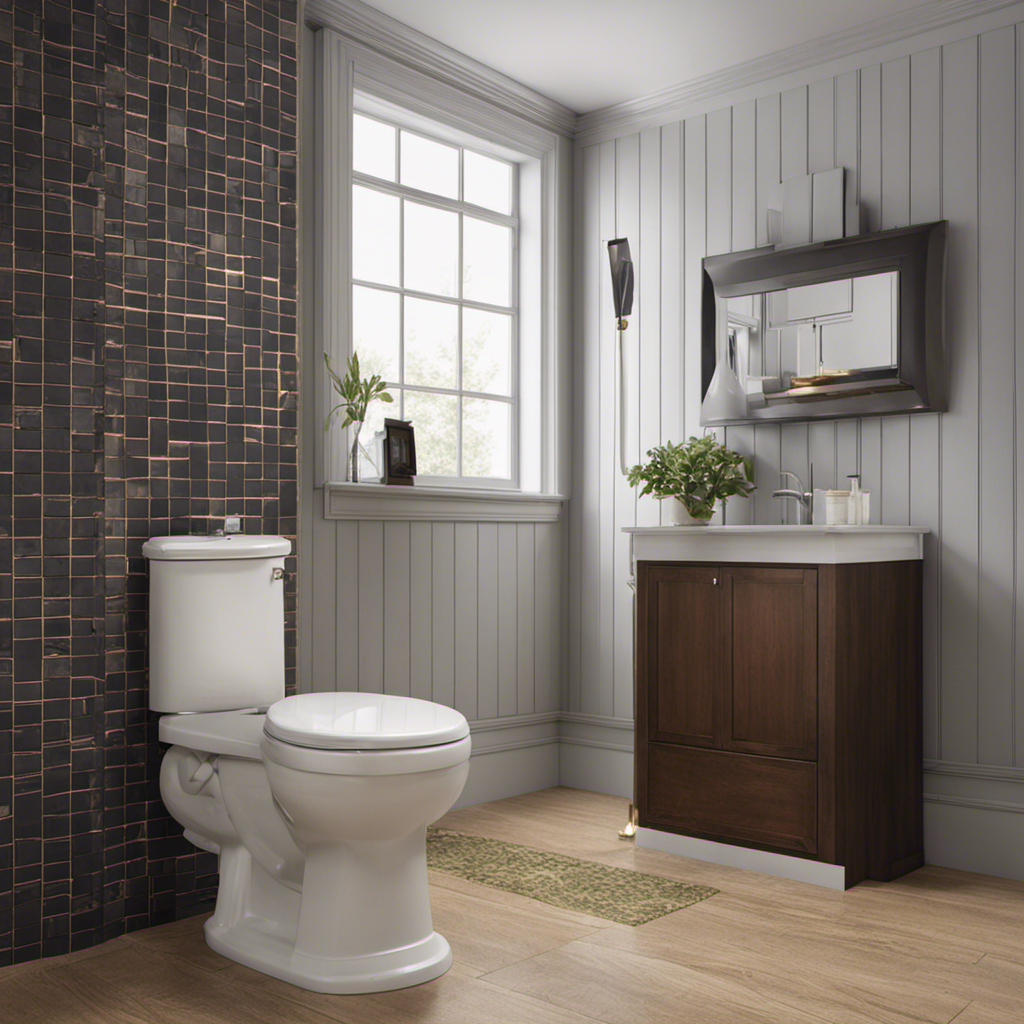Have you ever found yourself in a panic as your toilet refuses to stop flushing? It’s a frustrating situation that can leave you feeling helpless.
But fear not, because I’m here to share with you some practical tips on how to put an end to this never-ending flush. In this article, I will guide you through the ins and outs of understanding the toilet flushing mechanism, identifying common causes, and providing step-by-step instructions to fix the problem.
So, let’s dive in and rescue your toilet from its endless flushing cycle!
Key Takeaways
- The flushing mechanism consists of several parts that work together to create the flushing action.
- A faulty flapper valve is a common cause of constant flushing.
- To fix a leaking flush valve, replace the faulty flapper.
- Adjusting the water level prevents water waste and improves flush performance.
Understanding the Toilet Flushing Mechanism
To understand why a toilet flushes, it’s important to know how the flushing mechanism works. The flushing mechanism consists of several parts that work together to create the flushing action.
When the handle is pressed, it activates a lever that lifts the flapper valve at the bottom of the tank. This allows water from the tank to rush into the bowl, creating a powerful flow that flushes away waste.
As the water flows into the bowl, it creates a swirling motion that helps to carry the waste down the drain. The noise you hear when a toilet flushes is caused by the rush of water entering the bowl.
A diagram of the toilet flushing mechanism can help you visualize how it all works together.
Identifying Common Causes of Constant Flushing
One common cause of a toilet constantly flushing is a faulty flapper valve. The flapper valve is a rubber seal located at the bottom of the toilet tank. Its purpose is to release the water from the tank into the bowl when the handle is pressed, and then seal the opening again to allow the tank to refill.
However, if the flapper valve is damaged or worn out, it may not create a proper seal, causing water to continuously leak into the bowl. One of the common signs of a faulty flapper valve is a toilet that keeps running even after flushing.
To troubleshoot this issue, you can start by inspecting the flapper valve for any signs of damage or wear. If necessary, replace the flapper valve with a new one to solve the constant flushing problem.
Steps to Take When the Toilet Won’t Stop Flushing
When dealing with a toilet that won’t stop flushing, there are a couple of key points to consider. The first is a faulty flush valve. This valve, located at the bottom of the tank, is responsible for controlling the flow of water into the toilet bowl. If this valve is worn out or damaged, it can cause the toilet to constantly flush.
Another factor to consider is water pressure issues. High or low water pressure can also lead to a toilet that won’t stop flushing.
Faulty Flush Valve
The faulty flush valve can cause a toilet to continuously flush. When the flush valve is not working properly, it can lead to water constantly running into the toilet bowl.
To fix a leaking flush valve, you may need to replace the faulty flapper. First, turn off the water supply to the toilet by locating the shut-off valve behind or near the toilet. Flush the toilet to drain the remaining water from the tank.
Remove the old flapper by disconnecting it from the flush valve chain and unhooking it from the overflow tube. Install the new flapper by attaching it to the flush valve chain and hooking it onto the overflow tube.
Turn the water supply back on and test the toilet to ensure it no longer continuously flushes.
Water Pressure Issues
To fix water pressure issues, you should check the water supply valve and ensure it is fully open. Sometimes, the water supply valve may not be completely open, which can result in low water pressure. Here are three steps to check and fix water pressure issues:
-
Start by locating the water supply valve, usually found near the base of the toilet. Turn it clockwise to fully open it. This will allow water to flow freely into the toilet tank.
-
If the water pressure is still low, check for any clogged pipes. Sediment, mineral deposits, or debris can accumulate over time and restrict the flow of water. Use a plunger or a plumber’s snake to clear any blockages.
-
Finally, ensure that the water supply line is not kinked or damaged. A damaged or twisted water supply line can also cause low water pressure.
By following these steps, you can effectively check and fix water pressure issues in your toilet.
Now, let’s move on to fixing a stuck flush valve and resolving the toilet flushing problem.
Fixing a Stuck Flush Valve
You can easily fix a stuck flush valve by gently jiggling the handle. Sometimes, the valve can get stuck due to debris or a faulty mechanism. To fix it, start by removing the tank lid and inspecting the flush valve. If you notice any debris or buildup, clean it using a mild detergent and a brush. If the problem persists, you may need to replace the flapper. To do this, turn off the water supply, drain the tank, and remove the old flapper by disconnecting it from the chain. Install the new flapper and adjust the chain length to ensure a proper seal. Additionally, you can adjust the water level by using the water level adjustment screw located on the fill valve. This can help prevent water from overflowing and improve the flush performance.
| Pros | Cons |
|---|---|
| Easy to fix | May require replacement parts |
| Cost-effective | Requires some DIY skills |
| Improves flush performance | Can be time-consuming |
| Prevents water waste | |
| Saves money on water bills |
Adjusting the Water Level in the Toilet Tank
Adjusting the water level in your toilet tank can help prevent water waste and improve flush performance. Here are three simple steps to adjust the water level in your toilet tank:
-
Locate the float ball: The float ball is usually attached to the fill valve or connected to the float arm. It’s responsible for controlling the water level in the tank.
-
Adjust the float ball: Depending on the type of float ball you have, you can either bend the float arm or adjust the screw on the fill valve to change the water level. Make sure the water level is about an inch below the overflow tube.
-
Check the fill valve: If adjusting the float ball doesn’t solve the issue, you may need to check the fill valve. Ensure that it is functioning properly and not causing any leaks or blockages.
By following these steps, you can easily adjust the water level in your toilet tank and improve its overall efficiency.
Now, let’s move on to the next section about repairing or replacing the flapper.
Repairing or Replacing the Flapper
If the water continues to run in your toilet tank after flushing, it may be necessary to repair or replace the flapper. The flapper is a rubber valve that sits at the bottom of the tank and controls the flow of water into the bowl. Over time, the flapper can wear out or become damaged, causing leaks and constant running of water.
To repair the flapper, start by turning off the water supply to the toilet and flushing to drain the tank. Then, check the flapper chain for any damage or tangles. If necessary, repair or replace the chain.
Next, inspect the flapper seal for any cracks or wear. If the seal is damaged, it will need to be replaced. Simply remove the old flapper and install a new one, making sure it sits properly on the seal.
Troubleshooting Other Flushing Issues
When it comes to troubleshooting other flushing issues, two common problems that can arise are weak water flow and phantom flushes.
Weak water flow occurs when the toilet does not flush with enough force, resulting in incomplete removal of waste. This can be caused by a variety of factors, including a clogged or partially closed water supply valve, a blocked or restricted flush valve, or a malfunctioning fill valve.
On the other hand, phantom flushes refer to instances where the toilet spontaneously flushes without anyone activating the handle. This can be caused by a faulty flapper that is not sealing properly, allowing water to slowly leak into the bowl and triggering a flush.
Weak Water Flow
The water flow in the toilet seems weak, so you may want to check the water supply valve.
Here are three possible causes for the weak water flow and how to address them:
-
Clogged Toilet Tank Inlet: If the water flow into the toilet tank is weak, it could be due to a clogged inlet valve. To fix this, turn off the water supply valve, flush the toilet to drain the tank, and then use a small brush to clean the inlet valve. Turn the water supply back on and check if the flow has improved.
-
Partially Closed Water Supply Valve: Sometimes, the water supply valve may not be fully open, causing weak water flow. Locate the water supply valve near the toilet and make sure it is fully open by turning it counterclockwise.
-
Blocked Toilet Bowl Jets: If the water flow from the tank to the toilet bowl is weak, it could be due to blocked toilet bowl jets. Use a toilet brush to scrub the jets and remove any debris or mineral deposits that may be causing the blockage. This should improve the water flow in the toilet bowl.
Phantom Flushes
Phantom flushes are a common issue that many homeowners encounter with their toilets. It’s when your toilet randomly flushes itself without anyone pressing the handle. Not only is it annoying, but it can also waste a significant amount of water over time. Luckily, there are some simple toilet repair solutions to fix this problem.
One possible cause of phantom flushes is a leaky flapper. The flapper is a rubber valve that controls the flow of water from the tank to the bowl. If it’s not sealing properly, water can slowly leak into the bowl, causing the toilet to flush on its own. To fix this issue, you’ll need to replace the flapper.
Another potential cause is a faulty fill valve. The fill valve regulates the water level in the tank. If it’s not working correctly, it can cause the toilet to randomly flush. Replacing the fill valve should solve the problem.
Here’s a table summarizing the possible causes and solutions for phantom flushes:
| Possible Cause | Solution |
|---|---|
| Leaky flapper | Replace the flapper |
| Faulty fill valve | Replace the fill valve |
Conclusion
In conclusion, when faced with a relentless toilet that just won’t stop flushing, fear not, for there is hope!
Just like a skilled sailor navigating treacherous waters, armed with the knowledge of the toilet flushing mechanism, you can embark on a journey to fix the issue.
By identifying the common causes, taking the necessary steps, and making adjustments or repairs, you can conquer this plumbing challenge.
So, don’t let your toilet’s continuous flushing be a never-ending storm; set sail on the sea of knowledge and restore tranquility to your bathroom.
